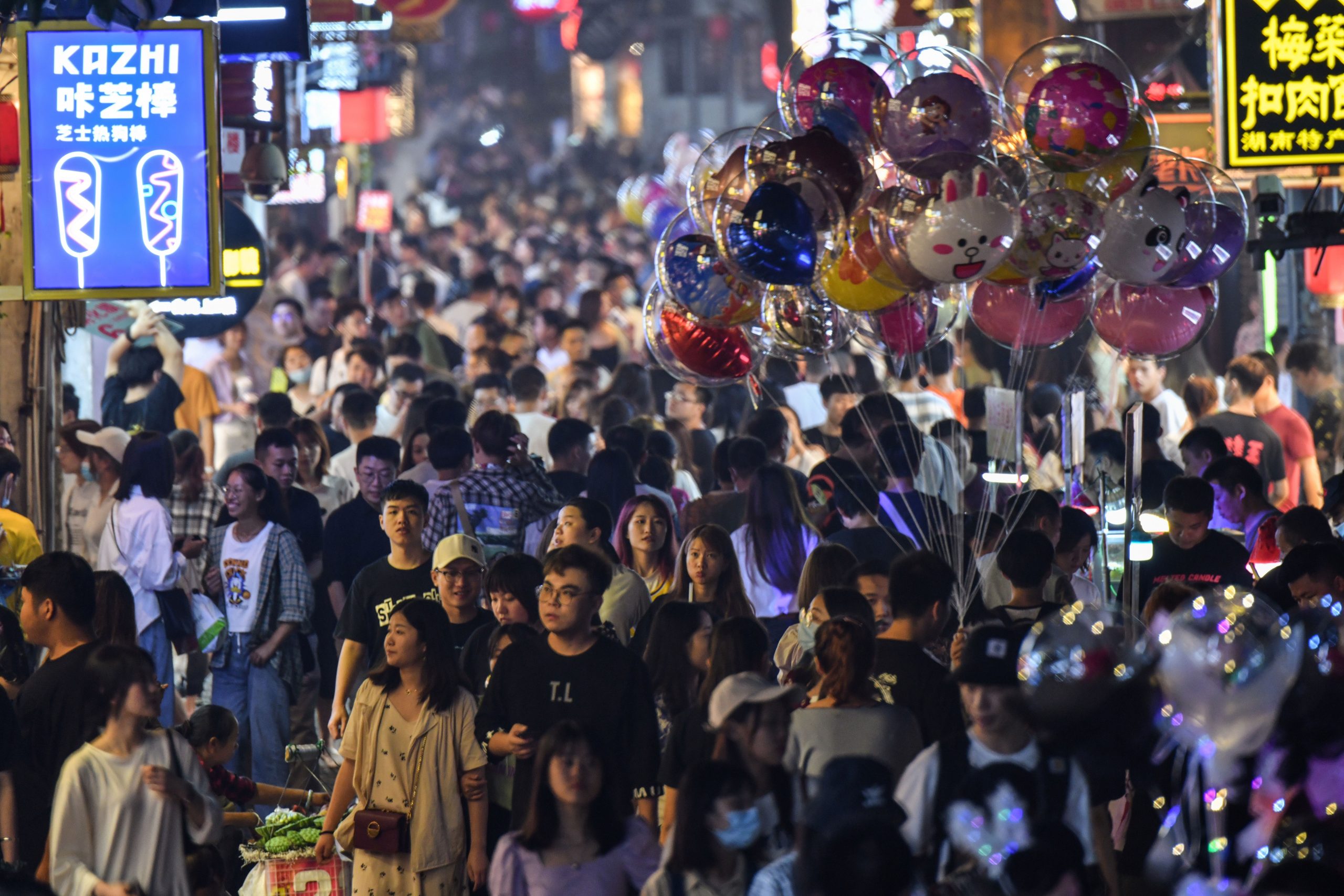China’s population has grown at its slowest pace in decades, reaching 1.41 billion, census results showed on Tuesday, highlighting fears of a looming crisis over an ageing society.
The growth of 5.4 percent was the slowest since the 1960s, due in part to falling birthrates and a sharp drop in the number of working-age people.
After decades of a controversial “one-child” policy, Beijing in 2016 allowed families to have two children as fears grew about China’s shrinking workforce.
But it is yet to produce the expected baby boom to help offset the country’s ageing population.
“The adjustment of China’s fertility policy has achieved positive results,” said Ning Jizhe, an official from the National Bureau of Statistics.
But he added that the “ageing of the population imposed continued pressure on the long-term balanced development of the population.”
The number of people aged between 15 and 59 dropped nearly seven percentage points, while those over 60 was up more than five percentage points.
Falling marriage rates in recent years have impacted on birth rates, as well as rising costs, plus women naturally delaying or avoiding childbirth due to their growing empowerment.
He said the coronavirus pandemic had also slowed birthrates.
“The Covid-19 epidemic increased the uncertainty of everyday life and increased worries around hospitalised childbirth, which further reduced residents’ willingness to give birth,” Ning added.
There were around 12 million births in 2020, he told reporters. This is down from 14.65 million births the year before — when Beijing reported the slowest birthrate since Communist China was founded in 1949.
The average size of a family is now 2.62 people, census data showed, down from 3.10 people 10 years ago.
In a stark sign of changing Chinese society, the urban population grew to 236.4 million — nearly 15 percent more than in the previous census.
More than 63 percent of people are now living in urban areas.
However, nearly 500 million are now working in places other than their official household registration, known as the hukou, which can make it harder for families to access schools or healthcare.
China conducts a census every decade to determine population growth, movement patterns and other trends, and the sensitive data plays a major role in government policy planning.
The 2020 survey was completed in December with the help of over seven million volunteers.
For the first time, much of the census data was collected online, Ning said, saying the data was “rigorous” and “reliable”.
But US-based academic Yi Fuxian, senior scientist at the University of Wisconsin-Madison, said he believes that China’s population was over-estimated and began to decline in 2018.
The 2020 census data is designed to avoid a “political earthquake” but will “lead to China’s economic, social, defense, foreign affairs and other policies (to) continue to be based on the wrong population data,” he said.
The census lit up Chinese social media and quickly racked up more than 120 million views.
Some complained that the data could not be accurate, while others pointed out the rising challenges and costs of family life in modern-day China.
“Life itself is not easy,” complained one.
“Isn’t it good for ordinary people to take responsibility for society and themselves by choosing to delay the next generation?”







